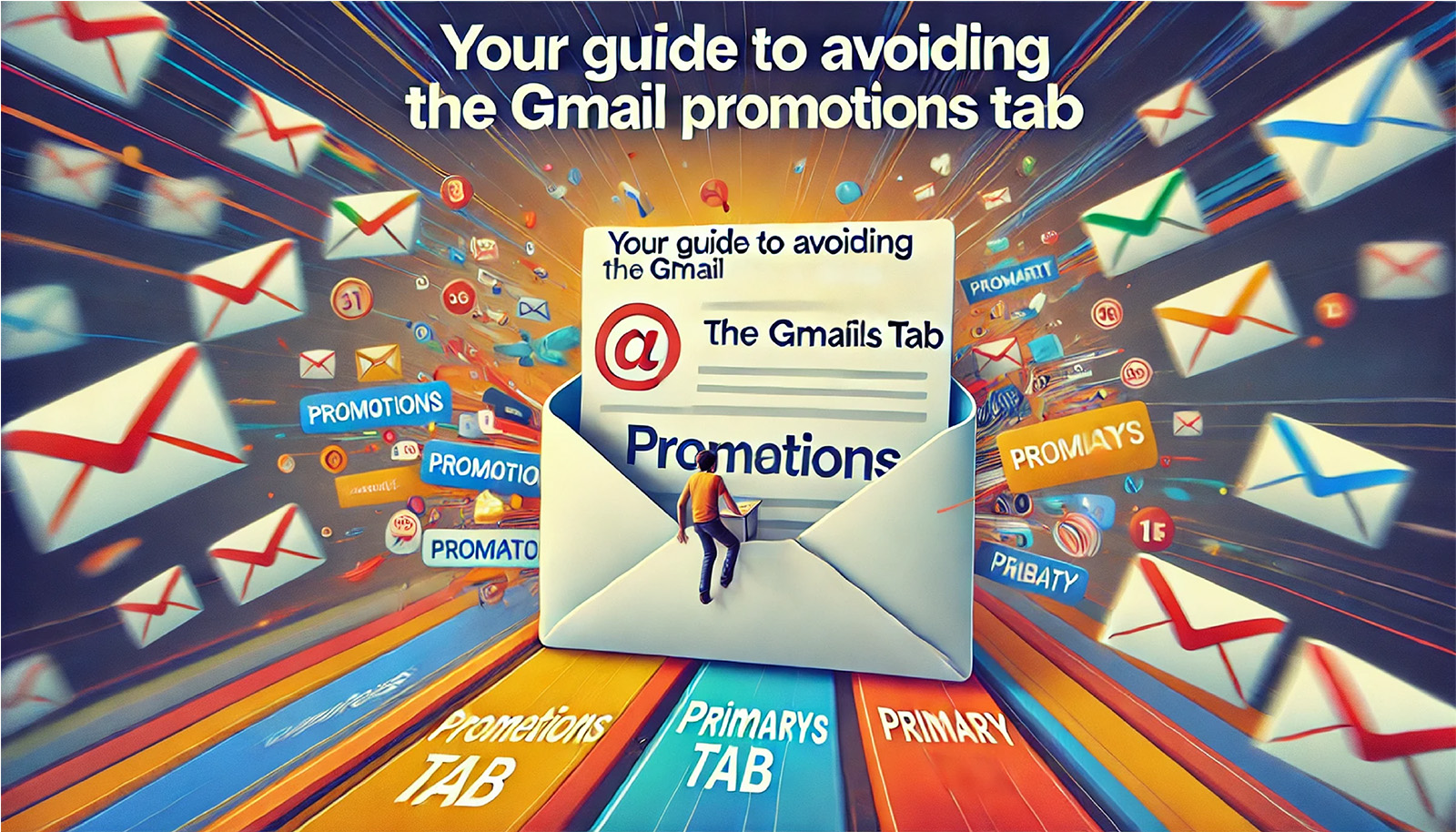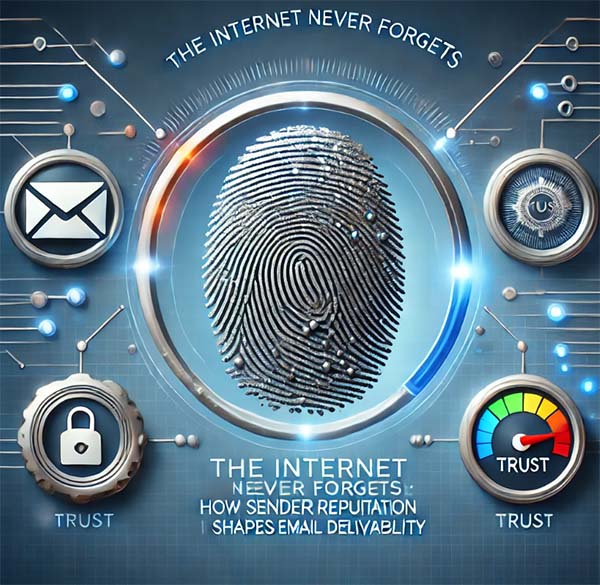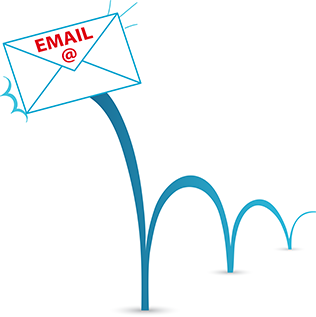How To Avoid the Gmail Promotions Tab in 2025: Your Essential Guide
Are your carefully crafted emails consistently buried in Gmail’s Promotions tab, hurting your engagement and conversions?
You’re not alone. It’s a common frustration among businesses, marketers, and SaaS teams. Everyone wants a shortcut, a quick fix, or a guaranteed method to land directly in Gmail's coveted Primary inbox. Unfortunately, there’s no legitimate way to "game" Gmail’s sophisticated algorithms.
You Must Be Cautious...
Recently, you may have come across certain "experts" selling a supposed miracle solution: a snippet of hidden code or a text snippet to insert in the footer of your emails designed to bypass Gmail’s filters.
This practice is known as hash busting (an old SEO tactic used to game the systems), and if you’re serious about long-term email marketing success, you’ll want to steer clear of it completely.
What is Hash Busting, and Why Should You Avoid It?
Hash busting is an outdated spam technique where senders slightly alter email content, such as adding random or hidden characters, to evade spam filters temporarily. Here’s how it works:
- Email providers create a digital fingerprint (hash) of messages flagged as spam.
- Spammers slightly modify emails (spacing changes, random text, invisible characters or by inserting a large amount of text in the footer of emails) to generate new hashes, momentarily avoiding detection.
While it may seem clever at first glance, hash busting is fundamentally deceptive. Email providers like Gmail, Yahoo, and Microsoft actively penalize senders who engage in this tactic. The consequences can be severe, including damaged sender reputations, reduced deliverability, or even being blacklisted entirely.
At Fundamental Marketing, we strongly recommend avoiding hash busting at all costs. Instead, legitimate marketers should:
- Focus on high-quality, relevant, personalized content.
- Maintain proper email authentication (SPF, DKIM, DMARC).
- Protect sender reputation through consistent, meaningful engagement.
- Regularly manage and segment subscriber lists.
Before diving into how to improve your inbox placement, let’s look at the average read rates across Gmail’s inbox tabs in 2025:
- Primary tab: 22% read rate
- Promotions tab: 19.2% read rate
- Social tab: 22.4% read rate
- Forums tab: 21.1% read rate
- Updates tab: 28% read rate
It’s also essential to highlight that nearly 60% of Gmail users have disabled inbox tabs entirely, preferring a unified inbox. Early data indicates a similar trend emerging with Apple's recent mobile inbox tab update.
With that context in mind, here’s how you can effectively increase the likelihood of reaching the Primary inbox (or unified inbox) in 2025.
Understanding Gmail’s Promotions Tab
Since Gmail introduced categorized inboxes (Primary, Promotions, Social, Updates, and Forums), it significantly changed how users interact with their emails.
- Primary: Personal emails, important alerts, and direct communication.
- Promotions: Marketing emails, deals, and promotional content.
- Social: Notifications from social media.
- Updates: Transactional messages, bills, and official notifications.
- Forums: Emails from discussion groups or communities.
Google’s intention was straightforward: to organize inboxes and help users quickly find important emails. However, for marketers, this meant promotional emails became less visible and less likely to be opened or interacted with.
Important Note: All Tabs Are Still the Inbox
It’s essential to recognize that Gmail (along with providers like Yahoo, Apple, and Outlook) considers all categorized emails, whether Primary, Promotions, Social, or Updates, to be part of the recipient’s inbox. These tabs are simply a way to help users prioritize content. They're not spam or junk folders, and landing in Promotions doesn't mean your emails are "blocked."
However, placement matters because emails in Promotions typically receive lower engagement than those in the Primary tab, which is why marketers strive for Primary inbox placement.
In recent years, Gmail's filtering has evolved dramatically, driven by artificial intelligence (AI). Previously, Gmail used a top-down approach, where overall domain reputation dictated inbox placement. A good reputation meant inbox delivery, and poor reputation resulted in spam placement.
But now, Gmail employs a sophisticated bottom-up, AI-powered approach. Gmail no longer applies one universal spam filter. Instead, each inbox is personalized, acting like an AI-powered assistant curating content based on individual user behaviors, interactions, and preferences.
Why Do Emails Land in the Promotions Tab?
Gmail’s advanced, AI-driven algorithms individually assess inbox placement. Key factors include:
- Sender Reputation: Sending bulk or promotional-style emails can trigger placement in the Promotions tab.
- Content Analysis: Promotional language, excessive images, links, or sales-driven terms are flagged.
- Individual User Behavior: Gmail learns from user interactions. If a recipient regularly ignores your messages, future emails will be categorized accordingly.
- Email Volume: High email volumes without proper warm-up or pacing trigger promotional categorization.
- HTML and Formatting: Emails heavy with HTML, large images, or complex formatting appear promotional and are often filtered accordingly.
9 Proven Strategies to Reach Gmail’s Primary Inbox in 2025
Implement these best practices consistently to ensure your emails land in your prospect’s Primary inbox:
- Personalize Every Email: Customize content by using the recipient’s name and relevant details. Personalization improves engagement, signaling Gmail’s AI to prioritize your emails.
- Segment by Engagement and Avoid Bulk Sending: Segment your list not just by demographics but also by recent engagement and their position in your funnel. Tailor your messaging accordingly:
- Send different content to a prospect who engaged within the last 30 days versus one who hasn’t engaged in 60–90 days.
- Consider how recently (or infrequently) a recipient interacted with your emails. A recipient who opened recently is ready for a different conversation than one who hasn’t opened emails in months.
- Match content specifically to the prospect’s stage in your funnel. Be strategic about what information or call-to-action makes sense at that point.
- Maintain Strong Sender Reputation: Regularly verify and clean your subscriber lists. Encourage interactions like replies and clicks to strengthen your sender reputation. Implement proper email authentication (SPF, DKIM, DMARC). (Ninja Trick, you can leverage our EmailSmart ProTools to help you with this.)
- Minimize Links and Images: Limit visuals and links to essential ones. Excessive media can trigger Gmail’s promotional filters.
- Maintain Balanced Text-to-HTML Ratio: Favor simple, plain-text or lightly formatted emails. Conversational emails typically land in the Primary tab more consistently.
- Keep Emails Short and Relevant: Short emails (50–125 words) that clearly communicate your value proposition avoid Promotions and generate better engagement.
- Ask Subscribers to Move You to Primary: Request recipients manually move your emails to Primary or add you as a contact. Both actions directly improve future inbox placement.
- Optimize Email Timing: Send emails when your audience is most active. Positive interactions signal Gmail to prioritize your future messages.
- Include Clear Unsubscribe Options: Provide a clear unsubscribe link to build trust, reduce spam reports, and maintain sender reputation.
Next Steps: Optimizing Your Email for 2025
Consistently landing in the Primary inbox requires ongoing effort:
- Regularly segment subscribers based on engagement.
- Deliver personalized, high-quality content relevant to each recipient.
- Continuously test and adapt your strategies based on performance data.
- Proactively monitor and protect your sender reputation.
Prioritizing genuine engagement and authentic, user-focused email practices, not shortcuts, is key to consistently reaching your audience’s Primary inbox, driving deeper connections, and maximizing your marketing ROI.
Ready to optimize your email deliverability and boost engagement?
Discover how Fundamental Marketing can elevate your email today!








